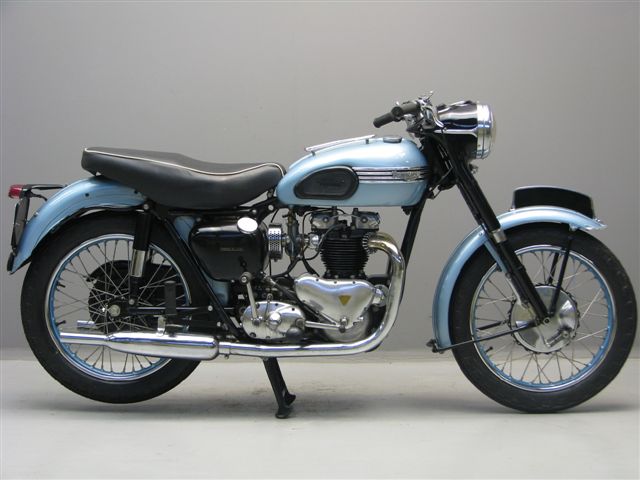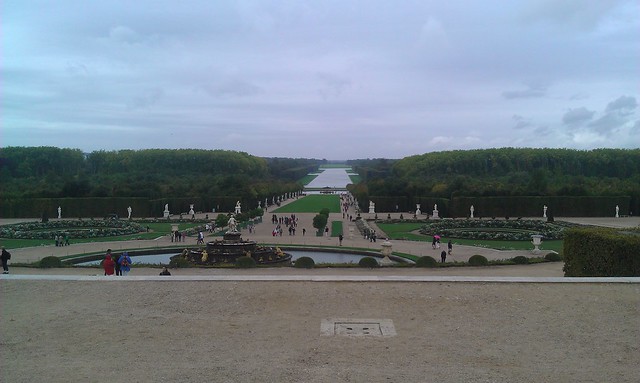
This is one of those books that I am wondering why it actually took me so long to get around to reading. I guess a part of it had to do with the title (when I was somewhat more fundamentalist in my faith, anything that reeked of another religion would be automatically discarded), but then I guess it also had to do with the fact that it was only recently that I ended up picking up a copy of it, and when my bookclub decided to have a session devoted entirely to, well, controversial books, it gave me an excuse to read it.
Within fifteen minutes of starting the book I suddenly discovered that this was the type of book that I was really going to enjoy (though it did start to drag a little at the end). This is one of those books that I consider a true, modern, American novel, and I am even inclined to put it into the category of 'a great American novel'. Pirsig refers to this novel as a kulturbarer, which is a Swedish word which means, well, culture bearer. He admits that when he started out writing this book he had no intention of writing such a great novel, and even suggests that when he had finished it most of the publishers refused to touch it (and those publishers are probably all kicking themselves now). The reason he suggests that the novel is a culture bearer is because it is one of those books that works to define the culture of the country in which it is written.
So, how is 'Zen and the Art of Motorcycle Maintenance' a culture bearer? Well, I would suggest that it works to explore the nature of the modern American culture, both its breadth and its depth. This book is truly a post-modernist work in that it touches upon both the real and the esoteric (as I will go on to explain as I explore three of the aspects of this novel). As I read this book I was sure that it was a work of fiction, that is until I got to the afterword which suggests otherwise. I am still left in doubt as to whether the source of this book was real or not, and even Pirsig throws this into doubt – is what he is writing about real, or is it simply a figment of his imagination. I don't really want to go into too much detail about that though because that will give away one of the important aspects of this novel. However, what I will look at (as suggested by my title to this commentary) are three of the ideas that Pirsig explores – Motorcycles, argument, and art.
Motorcycles
I am sure everybody knows what a motorcycle is, but if you don't, here is a picture of one (or at least the one I pictured him riding, because he never actually tells us):

though he could have been riding something like this:

Anyway, the motorcycle, to me, represents two aspects – technology and freedom. The reason that I raise the issue of technology is because Pirsig starts off exploring a number of conflicts (and these conflicts become important later on in the book). The use of the motorcycle as technology creates a clear conflict with nature, as there is a suggestion that there are groups who envisage technology as not only being in opposition to nature, but also seeking to destroy nature, not only through pollution, but also through development (rivers are diverted, forests are cut down, and cities arise as a form of artificial landscape). However, Pirsig points out that the motorcycle is an unusual form of technology in that when one is riding through nature it gives the rider a much closer experience of the natural world. As he explains as he begins his journey, when he travels he stays away from the freeways and instead travels along the smalls road that wind their way through forests, farms, and towns. Further, as he suggests, travelling in a car is basically travelling in an enclosed space and you view nature similarly to watching television, whereas when you travel on a motorcycle, you are immersed in the natural world, which is why I identify riding a motorcyle with freedom (though you will still never catch me on one).
Art
Pirsig uses the term quality, rather than the term art because what he is talking about is the creation of, well, stuff. Prior to industrialisation things were built in what was known as the cottage industry (such as the blacksmith, the cobbler, etc). If a blacksmith were to survive as a blacksmith he (or she) would have to build things that last – that is things of quality. If the blacksmith's work was shoddy then people would go and look for another blacksmith. However industrialisation changed that because the work went from the hands of the individual and into the factory where items would be manufactured on an assembly line. Further, as the western economic system developed, the desire to create things that lasted began to diminish as the corporate bosses sort ways to increase their profits, and by building things that lasted meant that their profits would be limited – so the factories began to produce things with built in obsolescence.
So, what has this got to do with art? Well, remember how I explained above about how technology and nature were in conflict because technology was seen as a way of destroying nature? Well, art is a fusion of nature and technology, so that through technology the natural world is morphed into art. Take for instance the countryside:

By using technology on the wilderness you come out with the garden:

and thus you have an artistic creation (Though some would argue that gardens are an abomination, however I am not one of them since I am a big fan of art).
However, as our society advances, certain economic forces begin to see that art has no real value and is simply a distraction towards the maximisation of profit. Take for instance these buildings in Melbourne;

These buildings were, I believe, constructed at the turn of the 20th Century, and as you can see, there is an artistic side to these buildings, despite their commercial uses. However, as the 20th century progressed, aspects of society saw this style of building as being pretty much a waste of money, and too lower the costs of construction began to build buildings like these:

Yet, the need for art within the workspace has come to be seen as a necessity. People working in a dull and drab office tend to be much less productive than people working in a bright office. In fact I have seen this within the company that I have worked at: when I started the office was dim and bland, and in an attempt to increase productivity (and to stop the number of people walking out the door) the powers that be decided to invest in the office, and within a few months the office was bright and colourful, and surprisingly staff retention began to increase.
I suspect that also works within the office culture as well. In an office where the culture is one of a cutthroat battle to climb the ladder as fast as possible, productivity suffers, however an office environment that is friendly, supportive, and where people can talk about things that are not directly related to work can have a substantial increase in productivity. It appears, at least in some aspects of our capitalist society, that people have come to realise that art matters, and that society exists beyond the simple desire to make money.
Thus Pirsig brings us to one aspect of the title of his book, and that is 'the Art of Motorcycle Maintenance'. Throughout the book Pirsig talks about maintaining and working on the motorcycle and offers warnings against using so called professionals. To him, taking a hands on approach means that one does things correctly, rather than relying upon another person who may not do the work properly. In fact, he even goes as far as suggesting that one should machine their own parts because by doing so one can be assured that they have the correct part. Thus, by working on the motorcycle oneself, it moves away from simply being little more than a technical skill, and becomes in itself a form of art.
The Art of Argument
I was initially simply going title this section 'Argument' but in line with the discussion above, I thought it necessary to take on this new title. Pirsig identifies two forms of argument, rhetoric and the dialectic. Rhetoric is a form of argument where you seek to persuade a person of an opposing point of view around to your point of view through find sounding speeches. However, the dialectic is a form of argument where one seeks to find a common ground and bring the two opposing sides together to create a merged position. I am sure everybody has seen this diagram of Hegel's dialectic:

though Hegel was not the first person to develop this form of argument. This form goes as far back as the ancient Greeks – Hegel only created a diagram to provide clarification of this form of argument. Christians tend not to like this form of argument though because it moves away from an objective truth to a more relative form of truth, however to ignore the dialectic is to ignore a foundational aspect of our culture, and in fact the dialectic does come into play in the Bible. For instance what happens when we bring the thesis of God together with the anti-thesis of humanity? We come to the synthesis of Jesus Christ.
However, I am not interested in how the dialectic applies to Christianity, but rather how the dialectic works with this particular book. Pirsig explores Greek philosophy extensively in this book, and talks a lot about the great philosophers Socrates, Plato, and Aristotle. However, these philosophers are rhetoricians in that they saw an objective form of truth and would not move away from it. Pirsig contrasts that with the sophists, who have a relative form of truth, and in a way they are the dialectics. Yet he points out that we only see these sophists through the eyes of one person – Plato. In parts Pirsig seems to see rhetoric as the stronger form of argument, however this book is actually very dialectical in composition. I shall explain:
He begins with conflict – between technology and nature, between the classical and the romantic, and between reason and faith. However, as the story progresses we begin to see these conflicts resolved through the dialectic, and this is very evident, as I have explained, with nature and technology. As I have demonstrated, the thesis of nature, and the antithesis of technology comes together to form the synthesis of art. Yet one also has the conflict of classical art and romantic art, which no doubt comes together to form, well, I guess modern art. Yet despite these syntheses going on, there is also the rhetoric, as is demonstrated at the end, where the philosopher that Pirsig follows (Phaedrus – a character based upon the Platonic dialogue of the same name), ends up destroying the dialectic of the Chairman of the faculty with his well argued rhetoric.


 Log in with Facebook
Log in with Facebook 




















